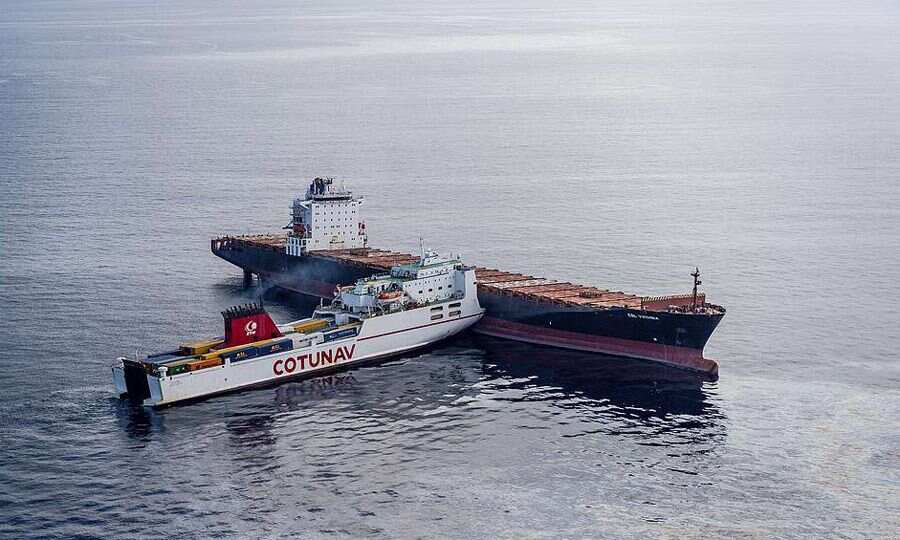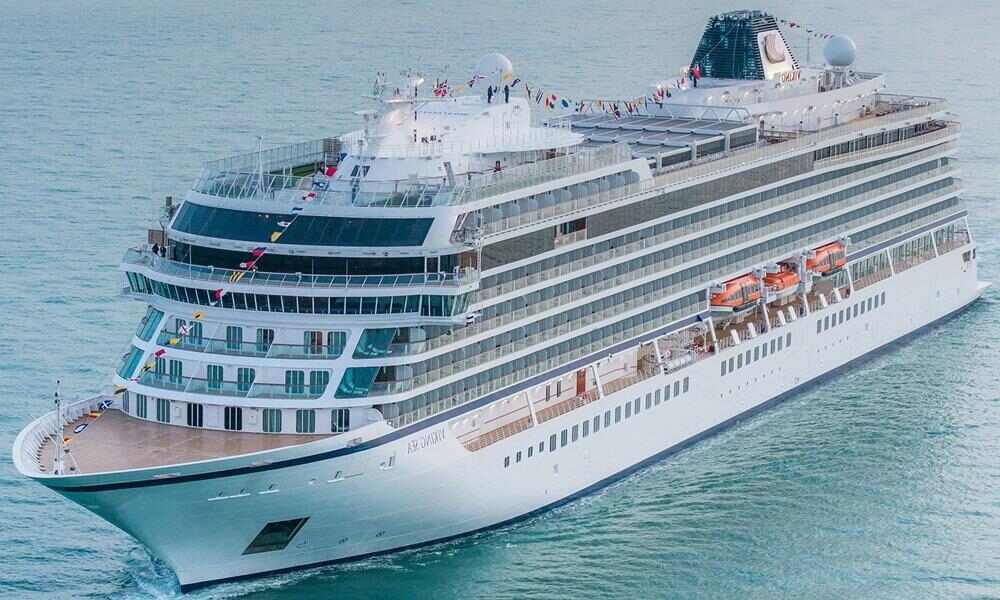Introduction to Ship Dynamics gives a detailed explanation of the movements and activities of ships in the water. The study of ship dynamics encompasses a wide range of topics, including as stability, movement, and resistance, as well as interactions between the ship and the surrounding water. An understanding of ship dynamics is crucial for ship design, construction, and operation as well as accident prediction and prevention. Because ship dynamics involves the application of hydrodynamics, structural mechanics, and control systems, everybody working in the maritime industry, from shipbuilders to naval architects, needs to have a solid understanding of it.
Hydrodynamics in Ship Dynamics:
A key component of ship dynamics is hydrodynamics, which deals with how water moves and how that interacts with ships. This area of research is utilized to examine and comprehend the forces, such as resistance, propulsion, and maneuverability, acting on a ship’s hull.
Hydrodynamics explains how a ship behaves in the water and how its performance is influenced by the location of its appendages (such as rudders and propellers), the shape of its hull, and the flow of water around it. Additionally, it aids in the explanation of phenomena like wave generation, bow and stern waves, and the development of a ship’s wake that takes place while a ship travels through the water.
When designing a ship, engineers can use hydrodynamics to produce a hull form that is effective for propulsion and resistance, which lowers fuel consumption and boosts speed. Additionally, it aids in the design of the ship’s rudders and propellers to maximize agility.
In conclusion, hydrodynamics is a crucial component of ship dynamics that clarifies how a ship interacts with the water and demonstrates how to improve its resistance, propulsion, and maneuverability.
Structural Mechanics in Ship Dynamics:
The study of structural mechanics in ship dynamic examines how a ship’s structural elements, such as its hull, deck, and superstructure, interact with the forces it encounters at sea. This comprises both static and dynamic loads, like waves and wind, as well as the weight of the ship and its cargo. In ship dynamics, structural mechanics aims to ensure that the ship can endure these forces without breaking or being damaged while also maximizing the design of the ship for effectiveness and safety.
Control Systems and Maneuverability:
In ship dynamics, the study of control systems and maneuverability focuses on how a ship’s propulsion, steering, and hull design affect its capacity to move and change direction. Analysis of the ship’s response to control inputs, such as rudder and propulsion adjustments, as well as how these inputs impact the ship’s speed, turning radius, and stability, are included in this. Engineers build and optimize the ship’s control systems to increase maneuverability using control system principles including feedback control and system dynamics. This can involve the development of a better rudder, bow thrusters, and other devices to aid with the ship’s movement and turning.
Interaction between Ship and Water:
The study of how a ship’s motion affects the water surrounding it and vice versa is part of the complex, multidisciplinary area known as the interaction between a ship and water. Analyzing the ship’s hydrodynamic performance, which includes resistance, propulsion, and seakeeping, as well as the impact of waves, wind, and currents on motion is part of this.

To describe and comprehend the fluid-structure interaction, engineers apply the principles of fluid dynamics, such as boundary layer theory, potential flow, and numerical simulation. Additionally, they evaluate and validate the ship’s performance in a controlled setting using physical models and experimental techniques.
A ship’s efficiency, safety, and seaworthiness can all be impacted by the study of how a ship interacts with water throughout design, building, and operation.
Factors Affecting Ship Stability:
A ship’s capacity to maintain its upright position and fend off capsizing is known as ship stability. It is impacted by a number of things, such as:
- Center of gravity (CG): The higher the ship’s center of gravity, the lower its stability.
- Metacentric height (GM): The distance between the ship’s center of gravity and its center of buoyancy is known as the metacentric height. The ship is more stable the higher the metacentric height.
- Displacement: A ship’s stability increases as its displacement increases
- The shape of the hull: The ship’s resistance to rolling and capsizing is influenced by the shape of the hull. A ship with a wide hull is less stable than one with a full body.
- Loading and ballasting: The ship’s stability is impacted by the weight distribution on it. A load that is spread equally will be more stable than one that is uneven.
- Environmental factors: The ship’s stability can be affected by environmental factors such as waves, wind, and currents.
These elements are used by marine engineers to design and analyze the ship’s stability and make sure it can operate safely in its intended setting.
Importance of Understanding Ship Dynamics:
Understanding ship dynamics is important for several reasons.
- Safety: For the safety of the ship and its crew, it is essential to comprehend ship dynamics. It assists ship designers in creating vessels that can securely sail in various surroundings and weather conditions while avoiding capsizing or other hazardous circumstances.
- Efficiency: Engineers can build ships that are more fuel and propulsion efficient by having a better grasp of ship dynamics. This could save expenses and extend the ship’s range.
- Seaworthiness: In order to ensure that a ship is seaworthy, it is crucial to comprehend ship dynamics. In order to prevent damage or breaking up, it aids engineers in creating ships that can endure the forces produced by waves, wind, and currents.
- Performance: For a ship to perform well, it is also crucial to comprehend ship dynamic. It aids engineers in enhancing the ship’s hydrodynamic performance and optimizing its maneuverability, speed, and stability.
- Environmental Impact: Reduced ship environmental impact requires an understanding of ship dynamics. It aids engineers in creating more energy-efficient, quieter, and less disruptive ships that have a minimal negative impact on marine life and coastal communities.
Overall, a ship’s design, building, and operation depend heavily on an understanding of ship dynamics since it promotes a ship’s safety, effectiveness, and sustainability.
Applications of Ship Dynamics:
The principles of ship dynamics are applied in a wide range of applications, including:
- Ship design: Ship dynamics principles are used by engineers to create seaworthy, effective, and safe vessels. In order to maximize the ship’s hydrodynamic performance, stability, and maneuverability, this also involves designing the hull shape, propulsion systems, and control systems.
- Naval architecture: The structural integrity, resistance, and propulsion of a ship are examined and optimized using ship dynamics principles by naval architects.
- Offshore engineering: Design and analysis of offshore constructions including platforms, floating production, storage, and offloading vessels, as well as other floating structures, utilize ship dynamics.
- Coastal engineering: Ship dynamics is used in the design and analysis of coastal structures such as breakwaters, jetties, and wharves.
- Autonomous ships: The principles of ship dynamics are used in the development of autonomous ships, including the design of sensors, control systems, and navigation systems to ensure the ship’s safe operation.
- Simulation and modeling: To anticipate and analyze the performance of the ship in various sea states and climatic conditions, ship dynamics are employed in the creation of simulation and modeling tools.
- Ship operation: In order to maximize a ship’s performance and safety while it is in operation—including during navigation, propulsion, and cargo loading—ship operators employ the concepts of ship dynamics.
- Environmental Impact: The environmental impact of ships, including their noise and emissions as well as their effects on marine life and coastal communities, is assessed and minimized using ship dynamics.
Conclusion: Ship Dynamics
In conclusion, ship dynamics is crucial to the design, construction, and operation of ships. Investigations of the ship’s interactions with the ocean as well as how the performance and stability of the ship’s loading, propulsion, and control systems are part of this process. Engineers use a variety of techniques to create and evaluate safe, efficient, seaworthy ships, including mechanics, fluid dynamics, control systems, and naval architecture. Understanding ship dynamics is essential for ship operation, ship simulation, and minimising the environmental impact of ships. It is a diverse field that is essential to ensuring the sustainability, effectiveness, and safety of ships.
Visit here at dailyidealblogs.com to read the daily latest information.



